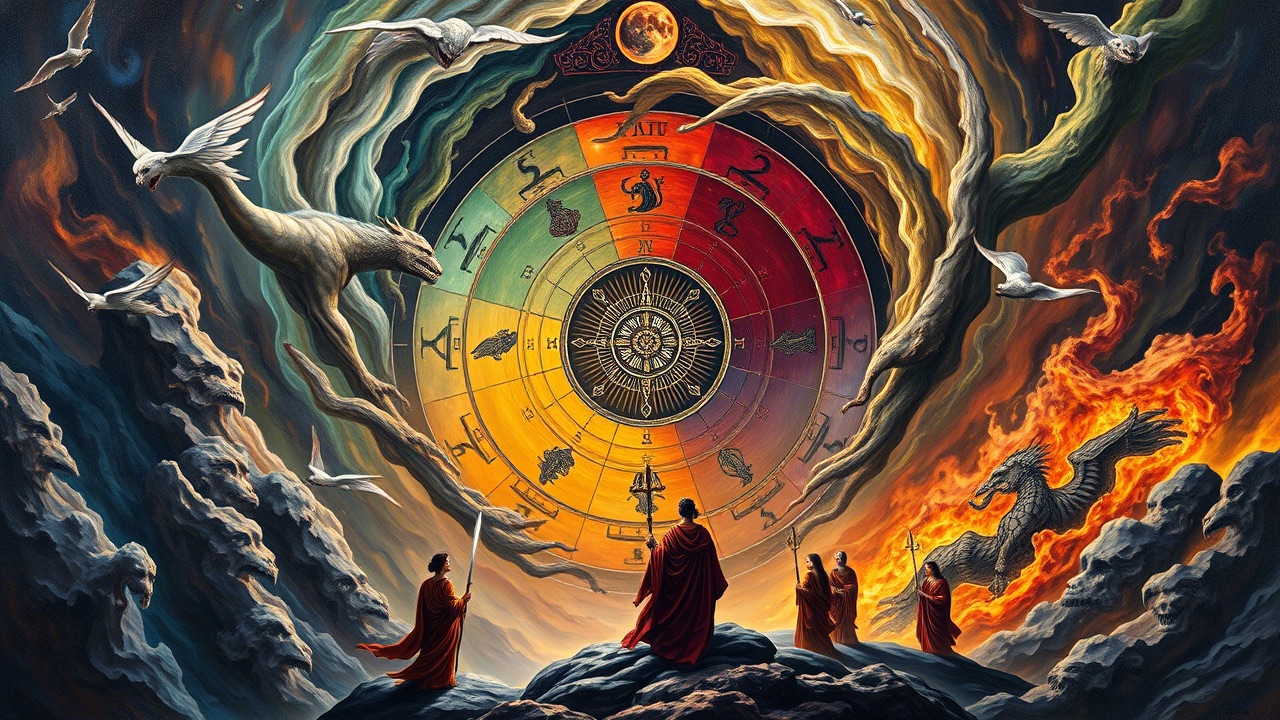In Hindu tradition, time isn’t a straight line; rather, it’s a cycle that repeats itself. This cycle is divided into four great periods, known as Yugas. According to Hinduism, the world as we know it could end in the year 2898.
A complete cycle of these four Yugas, called a Maha Yuga, lasts for a total of 4,320,000 years. Each Yuga has a specific duration, with the sequence starting with the longest and gradually decreasing to the shortest. Now, let’s explore each one:
1. Satya Yuga: The Age of Truth
Satya Yuga, also called Krita Yuga, was the first age. Think of it as a golden age.
- Everything was pure and true.
- There was no evil, no lying, and no bad stuff at all.
- People were totally honest and lived in harmony with nature.
- Matsya, the fish avatar of Vishnu, appears in this Yuga to save humanity from a great flood.
2. Treta Yuga: When Good and Evil Appear
Treta Yuga came after Satya Yuga. Things started to change a bit.
- Good and evil both existed, side by side.
- This is the time of the Ramayana, a famous Hindu story. In this story, Vishnu took the avatar of Rama (the prince of Ayodhya), where good (Rama) fights against evil (Ravana).
- The 2023 movie Adipurush is also based on this story.
3. Dvapara Yuga: Good and Evil Get Closer
In Dvapara Yuga, the line between good and evil became even blurrier.
- Good and evil weren’t just present in the world; they lived side by side within the same family.
- In this Yuga, Vishnu took the avatar of Krishna, who is the central figure in the Hindu epic story “The Mahabharata.” It’s a story about a great war between good and bad, who were cousins, i.e., in the same family.
4. Kali Yuga: When Good and Evil Become One
We are currently living in Kali Yuga. It’s considered the most chaotic of the four ages.
- Good and evil aren’t just in the world or in families; they exist simultaneously within the same person.
- It is a time of declining goodness, accompanied by rampant corruption, conflict, greed, and other such misdeeds.
- Hindu texts talk about Kalki, a future figure who will appear near the end of Kali Yuga. Kalki is expected to bring an end to this age, thus restarting the cycle of the next Maha Yuga with the start of a new Satya Yuga.
- The recent movie Kalki 2898 AD is inspired by these ideas, showing a future world and the coming of Kalki.
Conclusion
To summarize, the stories of Vishnu’s avatars, particularly Rama, Krishna, and Kalki, are not mere mythological tales; they are rich in symbolism and offer profound teachings about navigating the complexities of life.
These narratives, therefore, provide valuable lessons on dharma (righteousness), the distinction between good and evil, and the importance of faith and perseverance. They serve as a guiding light, offering wisdom and practical advice on how to live a meaningful and virtuous life.


Leave a Reply